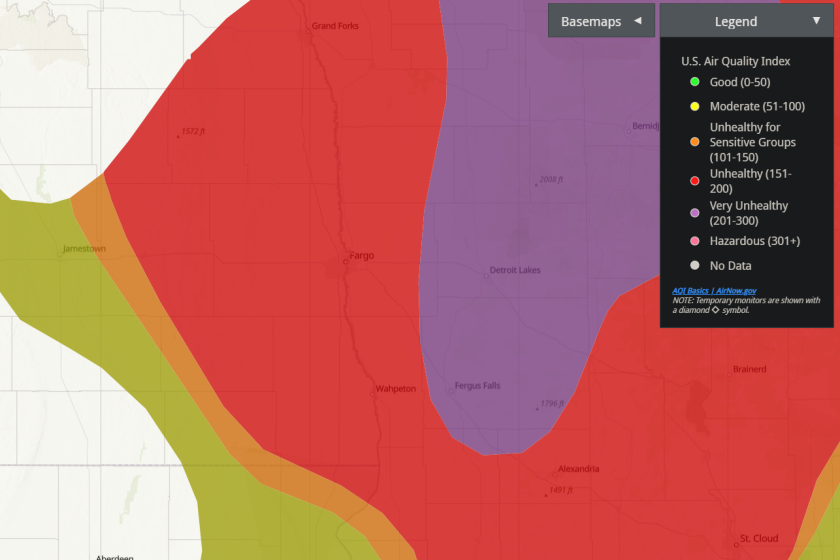Wildfire Smoke from Canada Causes Health Concerns in North Dakota

Heavy ground-level smoke from wildfires in central Canada is creating significant air quality issues across North Dakota and Minnesota. The smoke has led to increased pollution levels, resulting in unsafe breathing conditions for residents. Dr. Christopher Anderson, an emergency physician with Essentia Health, emphasized that while the pollutants affect everyone, specific groups are at greater risk, including individuals with asthma, chronic obstructive pulmonary disease (COPD), young children, and the elderly.
The Air Quality Index (AQI), which measures air pollution levels, indicates concerning conditions. The AQI scale ranges from 0 to 500, with values above 300 classified as hazardous. Currently, Fargo’s AQI is registering in the red to pink range, signaling that individuals with respiratory or heart conditions should limit outdoor activities.
Dr. Anderson advises that everyone, regardless of health status, should minimize strenuous outdoor activities until the smoke dissipates. He stated, “The heavier or faster your breathing, the more air you’re taking in, and the more particles you’re inhaling.” This highlights the need for caution, even during basic activities like walking.
Some residents are finding it difficult to avoid outdoor exposure. Leandro Casas, a performer at the Red River Valley Fair, has been entertaining audiences despite the smoke. He shared his approach to coping, stating, “You learn how to be flexible. It’s not the most comfortable thing, but entertainers are here to bring joy.”
While Casas continues to perform, Dr. Anderson urges those experiencing symptoms such as coughing, wheezing, or shortness of breath to seek shelter indoors. The air quality alert currently in effect for all of Minnesota is set to remain until 9 a.m. on July 14, 2024, underscoring the urgency of the situation.
As the wildfires in Canada persist, the impact of their smoke on air quality in the United States serves as a reminder of the interconnectedness of environmental issues and public health. Residents are encouraged to stay informed about air quality updates and to take proactive measures to protect their health during this challenging time.






